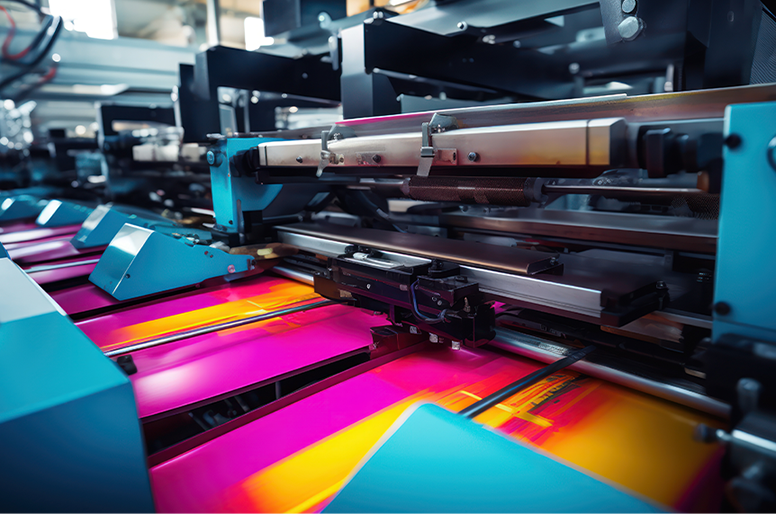In an increasingly digital world, the power of print design remains as potent as ever. Well-crafted print materials such as brochures, flyers, and posters continue to be effective tools for marketing, communication, and brand building. They provide a tangible, impactful way to connect with audiences, boost visibility, and convey messages in a memorable format. This service overview will explore the essential elements and benefits of print design, illustrating why it remains a critical component of any comprehensive marketing strategy.
The Essence of Print Design
Print design is the art and process of creating visual content for printed media. It encompasses a variety of products, including brochures, flyers, and posters, each serving unique purposes but all aimed at enhancing visibility and engagement. The process of print design involves several key stages:
- Concept Development: This initial phase involves understanding the client's objectives, target audience, and key messages. Designers brainstorm and conceptualize ideas that align with the brand’s identity and marketing goals.
- Design and Layout: Designers create visual layouts using principles of typography, color theory, and graphic design. This stage focuses on arranging text, images, and other elements in a visually appealing and coherent manner. Tools such as Adobe InDesign, Illustrator, and Photoshop are commonly used.
- Content Creation: High-quality content, including compelling copy and striking visuals, is essential. Professional designers work closely with copywriters and photographers or illustrators to produce content that captivates the audience.
- Proofing and Revisions: Before going to print, designs undergo a thorough proofing process to check for errors and ensure that all elements are aligned with the client’s vision. This stage may involve multiple revisions based on client feedback.
- Printing and Production: Once the design is finalized, it moves to the printing phase. Selecting the right paper, finishes, and printing techniques is crucial to ensure the final product meets the desired quality standards.
- Distribution and Evaluation: After production, the printed materials are distributed through appropriate channels. Post-distribution evaluation helps assess the effectiveness of the materials and gather feedback for future projects.
Key Types of Print Design
- Brochures: Brochures are versatile marketing tools that provide detailed information about products, services, or events. They are typically folded documents that can vary in size and complexity. Brochures are ideal for presentations, trade shows, and direct mail campaigns.
- Flyers: Flyers are single-page promotional materials designed for quick distribution. They are often used to announce events, special offers, or new products. Flyers are cost-effective and can be distributed in high-traffic areas or as inserts in newspapers and magazines.
- Posters: Posters are large-format prints designed to capture attention and convey messages from a distance. They are commonly used for advertising events, campaigns, or brand messages in public spaces. Posters rely heavily on striking visuals and bold text to make an impact.
Benefits of Professional Print Design:
Investing in professional print design offers numerous advantages:
- Enhanced Brand Image: High-quality print materials reflect professionalism and attention to detail, reinforcing the brand’s image and credibility. Consistent use of brand colors, fonts, and imagery across all print materials helps build a cohesive and recognizable brand identity.
- Increased Visibility and Reach: Printed materials can reach audiences in places digital media cannot. Flyers, brochures, and posters placed in strategic locations can attract the attention of potential customers who may not be reached through online channels.
- Tangible Engagement: Print materials provide a physical touchpoint with the audience, creating a lasting impression. The tactile experience of holding a brochure or seeing a poster in person can be more engaging and memorable than digital interactions.
- Targeted Marketing: Print design allows for highly targeted distribution. Materials can be tailored to specific audiences and placed in locations where they are likely to be seen by potential customers, enhancing the effectiveness of marketing efforts.
- Versatility and Creativity: Print design offers endless possibilities for creativity. From unique folding techniques for brochures to innovative poster designs, print allows designers to experiment with various formats and finishes to create standout materials.
- Durability and Longevity: Unlike digital ads that disappear with a click, print materials can have a long shelf life. A well-designed brochure or poster can continue to promote a brand or message for months or even years.
Conclusion
Print design remains a vital aspect of marketing and communication strategies. By creating stunning brochures, flyers, and posters, businesses can enhance their visibility, engage with audiences in a meaningful way, and leave a lasting impression. Professional print design combines creativity, strategy, and technical expertise to produce materials that not only look great but also deliver results. Whether for a small local campaign or a large-scale national marketing effort, investing in high-quality print design is an effective way to boost your brand's presence and achieve your communication goals.


